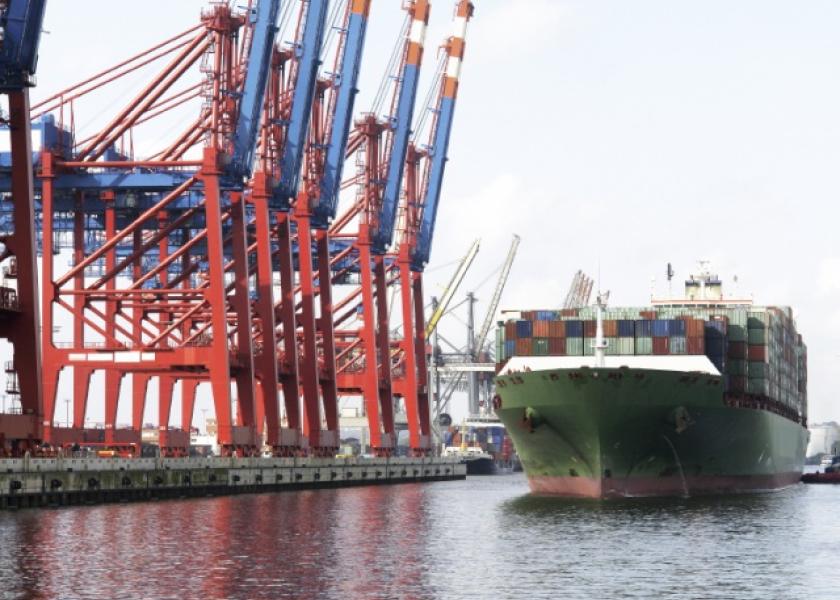Tariff Rates on Beef

Several factors influence U.S. beef trade with international supply and demand being the leaders. Factors influencing supply may include weather, subsidy programs, and expected future profitability while demand can be further decomposed into quality of product, food safety issues, international relations among countries, and tariff rates among others. This article’s focus will be tariff rates the United States beef industry faces with major beef export markets and how that compares with tariff rates of other beef exporting countries to those same destinations.
In 2017, the United States exported more than 678 million pounds of beef and variety meats to Japan with a value nearing $1.89 billion (US dollars) based on data compiled by the United States Meat Export Federation (USMEF). Japan primarily imports beef from Australia, United States, New Zealand, and Canada. However, Australia and the United States are the two main players. Based on data compiled by Meat and Livestock Australia (MLA), Australia supplied 50.2 percent of Japan’s imported beef in 2017 while the United States supplied 41.8 percent on a tonnage basis, not including variety meats. The U.S. has slowly regained market share in Japan following BSE in late 2003 with the 2017 trade year being reminiscent of the volume trade distribution prior to 2003.
South Korea imported $1.22 billion worth of beef and variety meats in 2017 accounting for nearly 406 million pounds of product (USMEF). Information from MLA reports that the United States accounted for 46.8 percent of total beef imports to South Korea by volume while Australia accounted for 45.5 percent by volume. Again, the United States has slowly been regaining beef market share in Korea since the first case of BSE. However, prior to BSE, the United States was the source of more than 68 percent of beef imports to Korea.
Canada and Mexico have consistently been top destinations for U.S. produced beef though Hong Kong has been an upstart the past few years and actually exceeded Canada in 2017. Mexico imported over 524 million pounds of beef and variety meats in 2017 worth nearly $980 million while Canada imported nearly 257 million pounds of beef and variety meats worth nearly $796 million. Hong Kong imported 288 million pounds of U.S. beef and variety meats worth $884 million in 2017.
The aforementioned values are meant to provide perspective of how much beef is being exported and the value of those products to major beef export destinations. The United States beef export market is fairly strong with its primary competitor being Australia and to a smaller extent Brazil and India. Though the United States leads the way from a beef quality, food safety and quantity supplied standpoint, there is work to be done on the tariff and trade agreement side of the coin.
The United States does not currently face a tariff on beef imported into Canada and Mexico due to the North American Free Trade Agreement (NAFTA). Similarly, there is no tariff on beef exported to Hong Kong. The absence of tariffs is positive toward the domestic beef and cattle industries as it keeps the price of our beef products relatively low for importing countries. Understanding that Canada and Mexico are major destinations for U.S. beef, it is important that the renegotiated NAFTA terms are favorable to the beef industry.
Beef exports to Japan have been a focal point since the Japan-Australia Economic Partnership started the process of lowering beef import tariffs from Australia to Japan. In 2018, Australian frozen beef will face a tariff of 27.2 percent while chilled beef will face a 29.9 percent rate. These rates will decline to 19.5 percent on frozen beef and 23.5 percent on chilled beef over an 18 and 15 year period respectively. U.S. beef headed for Japan faces a 38.5 percent duty with a safeguard level that can escalate that tariff to 50 percent. U.S. beef currently faces a 24 percent tariff rate in Korea, but this will be reduced to zero by 2026. Australia currently faces a 26.6 percent tariff.
Based on current trade agreements, the United States will be less competitive with Australia from a price standpoint in Japan unless a trade agreement can be established. The current agreement with Korea makes U.S. beef extremely competitive with Australia while NAFTA renegotiations will play a major role in the business done with our two closest neighbors. It may take a while before the market realizes all of the implications.







